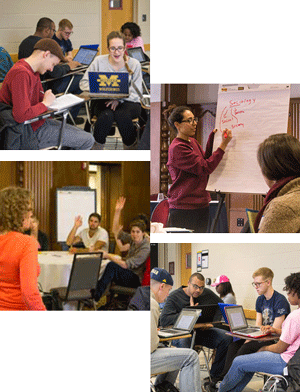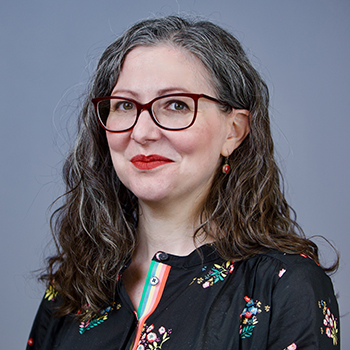New CRLT Resource: Supporting Students Facing Mental Health Challenges
 U-M counseling offices in collaboration with President Schlissel recently launched a new campaign with the motto “We’re here for you,” designed to increase community dialogue on mental and emotional health and normalize access to services. As a U-M instructor, you are likely aware that many of your students experience mental health challenges. What can you do within the bounds of your role to promote mental health and support students experiencing challenges?
U-M counseling offices in collaboration with President Schlissel recently launched a new campaign with the motto “We’re here for you,” designed to increase community dialogue on mental and emotional health and normalize access to services. As a U-M instructor, you are likely aware that many of your students experience mental health challenges. What can you do within the bounds of your role to promote mental health and support students experiencing challenges?
CRLT’s latest Occasional Paper “Supporting Students Facing Mental Health Challenges” provides a starting point for faculty and GSIs interested in exploring this topic. As the paper emphasizes, you can take many steps in your role as an instructor to normalize a focus on students’ mental health and set up an academic experience that promotes growth and resilience.
In the Occasional Paper, you will find:





 Faculty and GSIs from across campus are invited to explore
Faculty and GSIs from across campus are invited to explore  We’d add that student insights can likewise contribute to teaching practices that are more inclusive and equitable. Drawing upon their experience learning from a range of instructors and alongside a range of peers, student consultants can offer perspectives on several key
We’d add that student insights can likewise contribute to teaching practices that are more inclusive and equitable. Drawing upon their experience learning from a range of instructors and alongside a range of peers, student consultants can offer perspectives on several key 
 The moment I began to seriously consider pursuing a Ph.D. occurred when I was an undergraduate, sitting in a lecture for Introduction to Sociology. My mind was blown as my professor described the social structures that had previously been invisible to me. Through a single lecture, he was able to seamlessly challenge my existing assumptions about our social world. As I listened to his words, I was enthralled by the power and possibility of the university classroom. After also learning about the research side of faculty life, I decided that pursuing a Ph.D. in Public Policy and Sociology was the right path for me.
The moment I began to seriously consider pursuing a Ph.D. occurred when I was an undergraduate, sitting in a lecture for Introduction to Sociology. My mind was blown as my professor described the social structures that had previously been invisible to me. Through a single lecture, he was able to seamlessly challenge my existing assumptions about our social world. As I listened to his words, I was enthralled by the power and possibility of the university classroom. After also learning about the research side of faculty life, I decided that pursuing a Ph.D. in Public Policy and Sociology was the right path for me. We return to teaching this semester in the wake of deadly white supremacist violence in Charlottesville and groundswells of resistance around the country. At such a critical moment in our nation’s history, instructors across campus are especially aware of how broader national conversations, conflicts, and movements are likely to enter and affect their classrooms, labs, and studios. As college
We return to teaching this semester in the wake of deadly white supremacist violence in Charlottesville and groundswells of resistance around the country. At such a critical moment in our nation’s history, instructors across campus are especially aware of how broader national conversations, conflicts, and movements are likely to enter and affect their classrooms, labs, and studios. As college 

